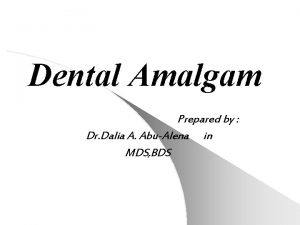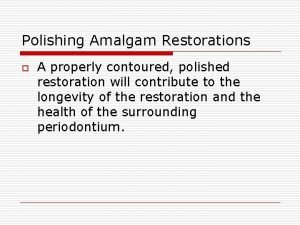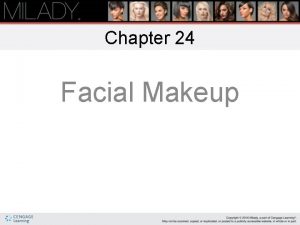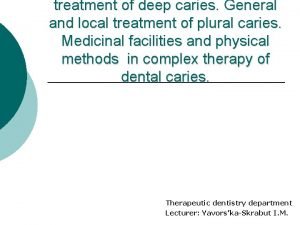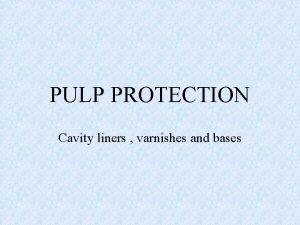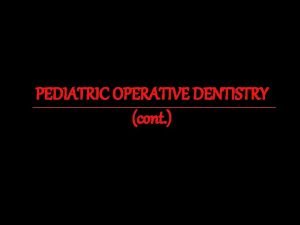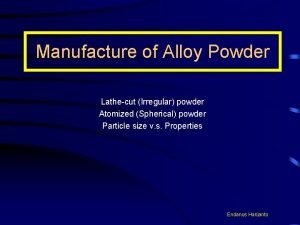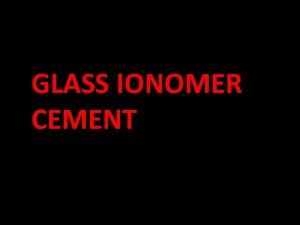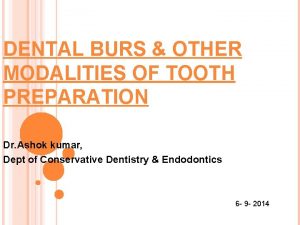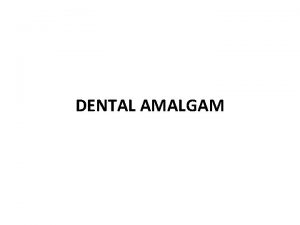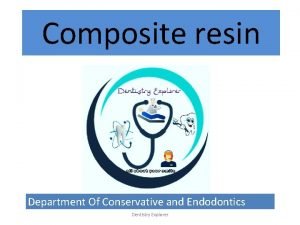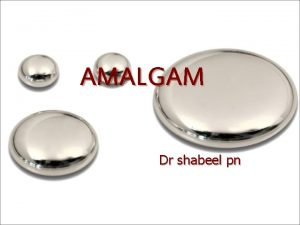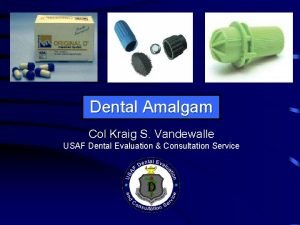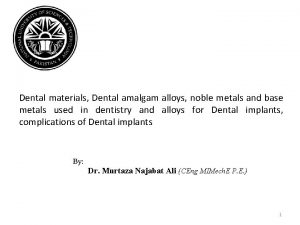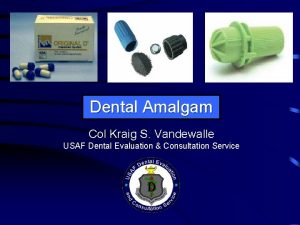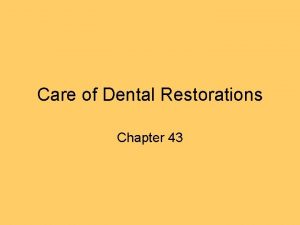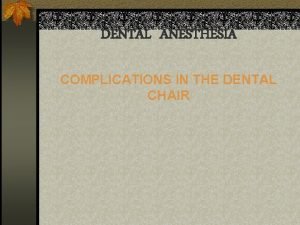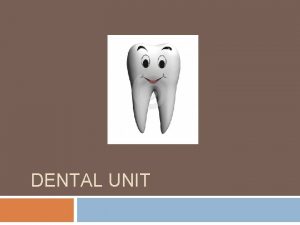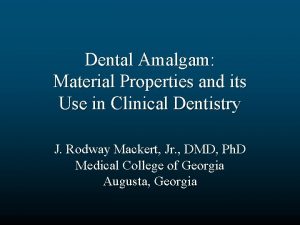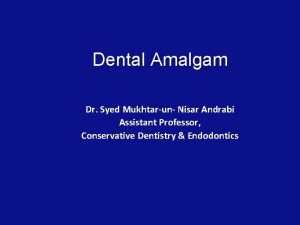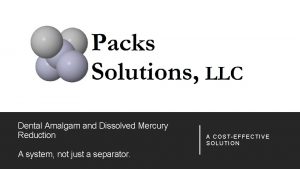topic A What is dental amalgam Should you



![History Ø In the west countries, it appeared in Germany in 1528. [3][4] Ø History Ø In the west countries, it appeared in Germany in 1528. [3][4] Ø](https://slidetodoc.com/presentation_image/378507a7ba4d3e9b6bf48934f30cb3dd/image-4.jpg)















- Slides: 19

topic A What is dental amalgam? Should you use it in your dental practice?

Introduction Ø Dental amalgam has been in use for more than 175 years and has been used for hundreds of millions of restorations. Ø This material is used to restore teeth with decay. Ø It is one of the materials used for direct restorations include, silver amalgam, composite resin and gold foil.

History Ø Dental amalgams were first documented in a Tang Dynasty medical text Hsin Hsiu Pen Tsao written by Su Kung in 659.
![History Ø In the west countries it appeared in Germany in 1528 34 Ø History Ø In the west countries, it appeared in Germany in 1528. [3][4] Ø](https://slidetodoc.com/presentation_image/378507a7ba4d3e9b6bf48934f30cb3dd/image-4.jpg)
History Ø In the west countries, it appeared in Germany in 1528. [3][4] Ø In the 1800 s, amalgam became the dental restorative material of choice due to its low cost, ease of application, strength, and durability. [5]

Composition lmercury + metal alloy mixture Øhalf-to-half Øone-to-two l. Main component: Ag、Sn l. Secondary component: Cu、Zn l. The relative ratios between the other metals used in dental amalgam are also highly variable.

Properties • Ag • Advantages • Enhances the strength • Reduces liquidity • Forming a metallic luster • Disadvantages • Mixing difficulty • Engraving is not easy • Not easy to fill

Properties • Sn • Advantages • Easy engraving • Disadvantages • Difficults solidification • Loss strength • Increases liquidity

Properties • Cu • Advantages • More hard • Reduces liquidity • Disadvantages • Increases the chances of corrosion • Causes surface discoloration

How safe is amalgam? • the degree of harm caused by mercury in the body is related to the amount • anxiety, irritability, memory loss, headaches and fatigue. • research have concluded that amount released from amalgam in the mouth is very low. • In 2009, the U. S. Food and Drug Administration (FDA) evaluated the research and found no reason to limit the use of amalgam.

Should anyone consider alternatives to amalgam fillings? • people have allergic reactions to the mercury in amalgam. • pregnant women • people who have high exposure to mercury

Pros and Cons Advantages Amalgam fillings are considered one of the best filling methods of all time. Here’s why:

Advantages • • • Cheap Resistance Malleable Strong can be placed in one visit self-sealing can be used in a wet environment long track record less technique sensitive.

Pros and Cons Disadvantages At the same time, dental amalgams have a lot of disadvantages to consider.

Disadvantages • • • Color temperature changes allergic reaction environmental pollution Controversy removal of some healthy tooth structures

Comparison • Silver Fillings (Amalgams) • Advantages • Durability • Strength • Expense • Disadvantages • • • Poor aesthetics Destruction of more tooth structure Discoloration Cracks and fractures Allergic reactions

Comparison • Cast Gold Fillings • Advantages • Durability • Strength • Aesthetics • Disadvantages • Expense • Additional office visits • Galvanic shock

Comparison • Tooth-colored Composites • Advantages • Aesthetics • Bonding to tooth structure • Versatility • Disadvantages • • • Lack of durability increased chair time Additional visits Chipping Expense

Conclusion • Affordable • Stable • Safety

Reference • Bjørklund, G (1989). "The history of dental amalgam (in Norwegian)". Tidsskr Nor Laegeforen 109 (34– 36): 3582– 3585. PMID 2694433. • Czarnetzki, A. ; Ehrhardt S. (1990). "Re-dating the Chinese amalgam-filling of teeth in Europe". International Journal of Anthropology 5 (4): 325– 332. • Bharti R, Wadhwani KK, Tikku AP, Chandra A (2010). "Dental amalgam: An update". J Conserv Dent 13 (4): 204– 208. doi: 10. 4103/0972 -0707. 73380. PMC 3010024. PMID 21217947.
 What is solution in science grade 7
What is solution in science grade 7 Topic
Topic Finishing of amalgam restoration
Finishing of amalgam restoration Painted paragraph strategy
Painted paragraph strategy Research problem example for students
Research problem example for students No passing situations
No passing situations As you enter the deceleration lane
As you enter the deceleration lane Chapter 24 review questions milady
Chapter 24 review questions milady Rebec amalgam separator
Rebec amalgam separator Delayed expansion of amalgam
Delayed expansion of amalgam Pulp protection
Pulp protection Isthmus in class 2 cavity
Isthmus in class 2 cavity Lathe-cut vs spherical amalgam
Lathe-cut vs spherical amalgam Partial bevel
Partial bevel Trituration
Trituration Anhydrous gic
Anhydrous gic Dental burs for cavity preparation
Dental burs for cavity preparation Precarve burnishing
Precarve burnishing Conventional tooth preparation
Conventional tooth preparation Class 3 cavity preparation
Class 3 cavity preparation

